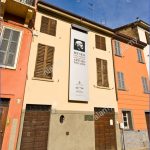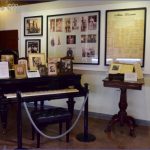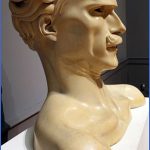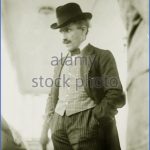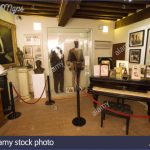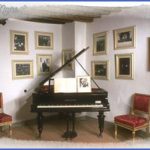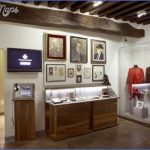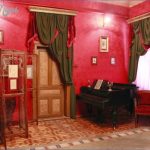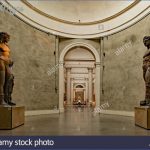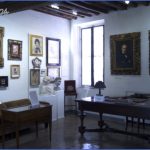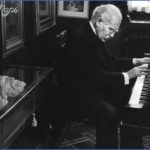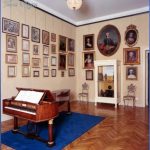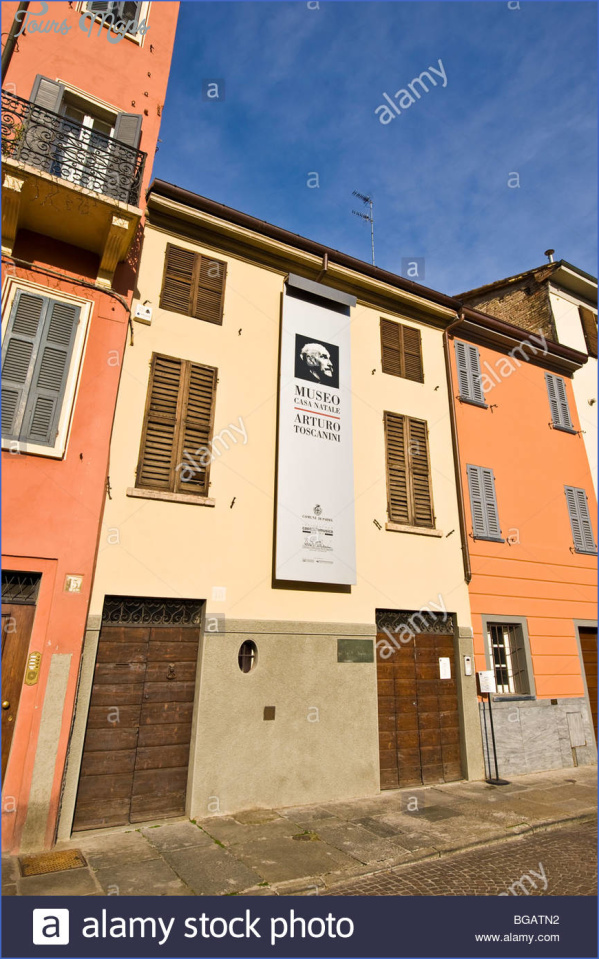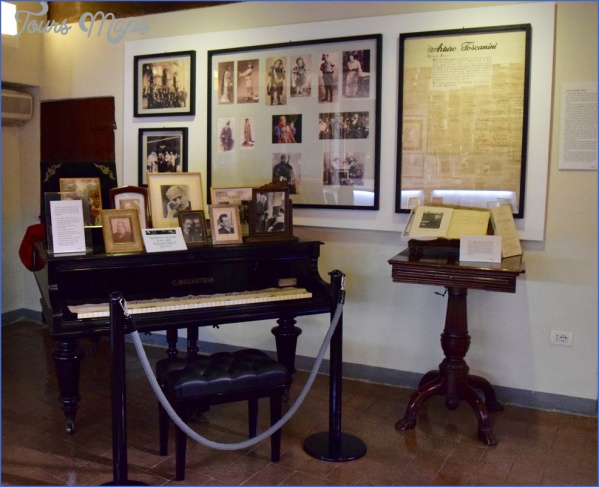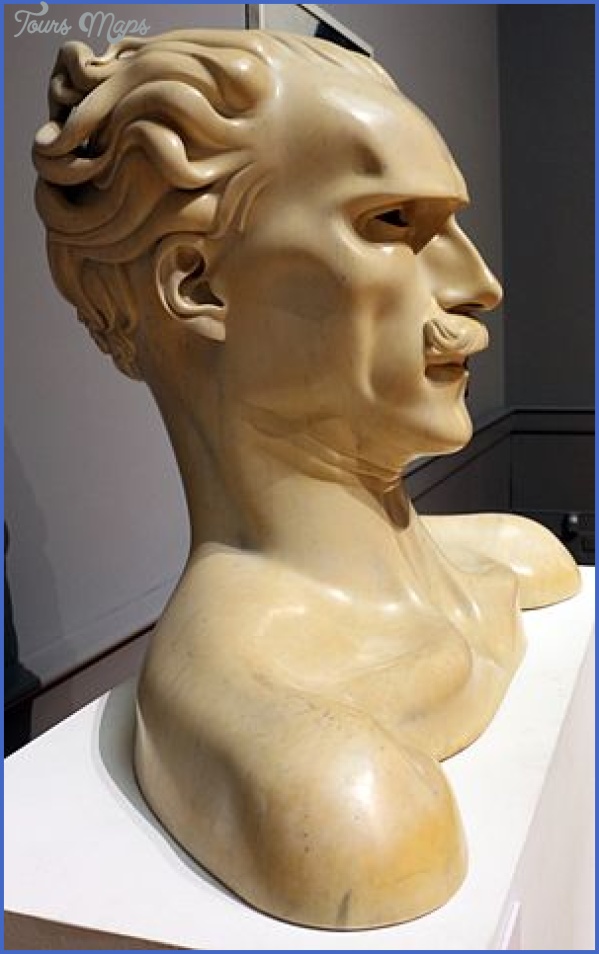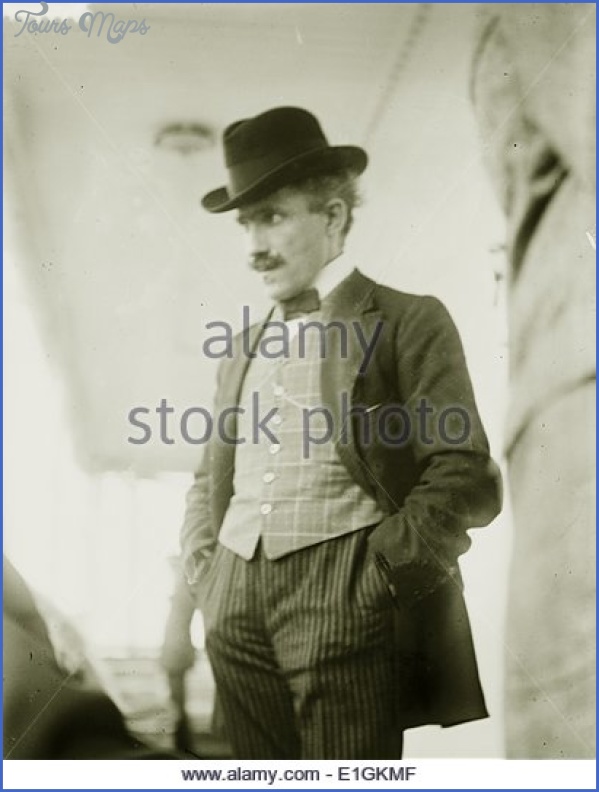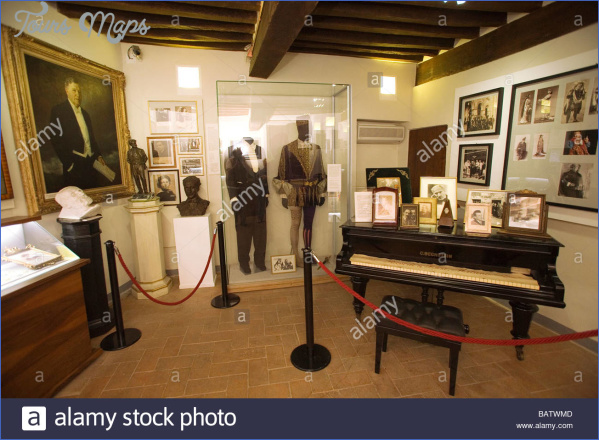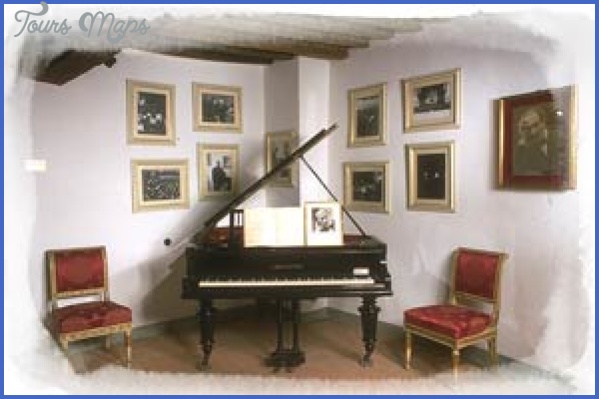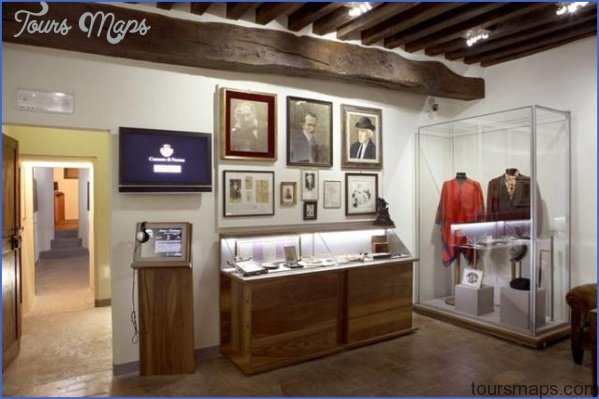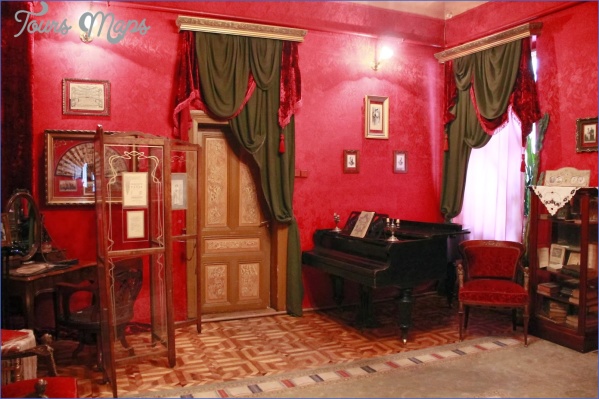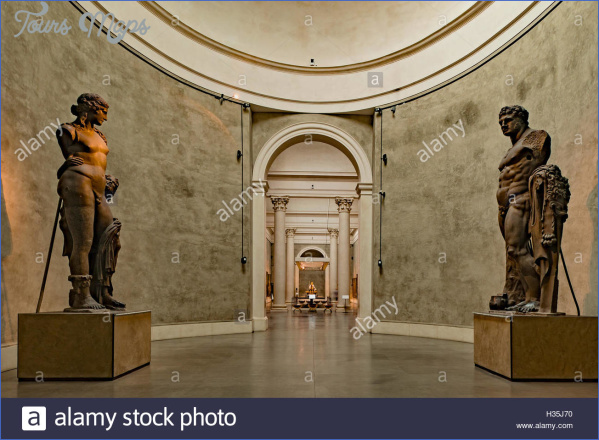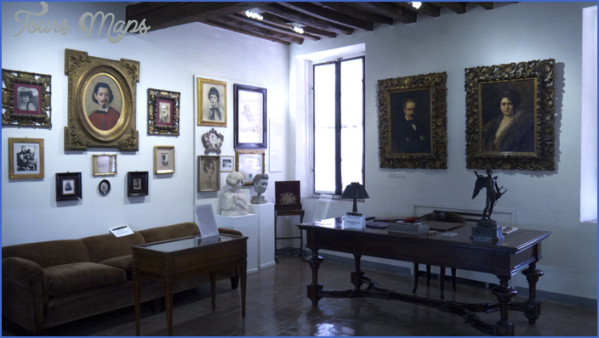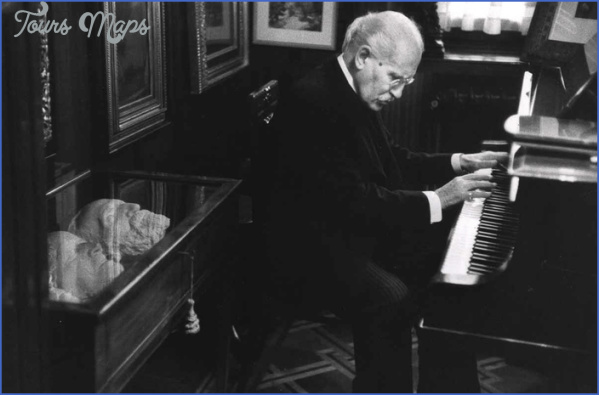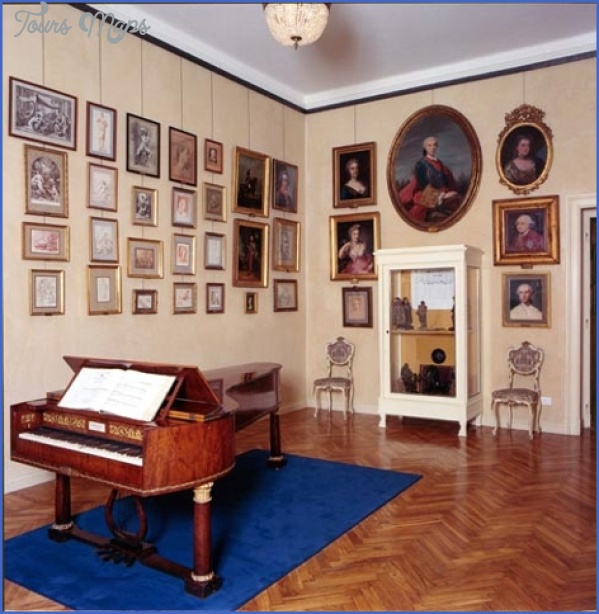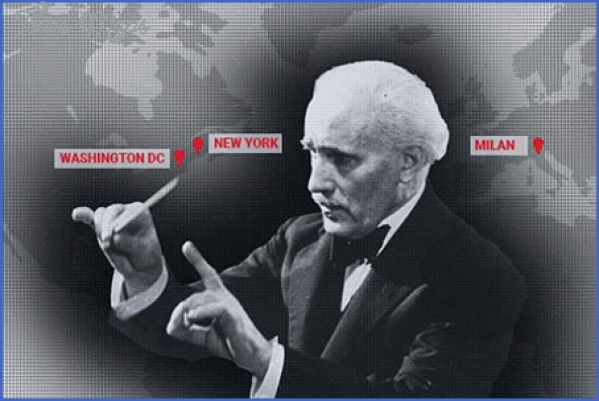TOSCANINI MUSEUM
Toscanini? It is as a conductor, of course, that he is remembered. But as a young man he composed too, and the sites in his native Parma where he is commemorated need to be noted here. The music itself is divided between the conservatories at Milan and Parma. None of it is now in currency. Some pieces are said to have been written when he was a young man for ‘ladies of influence’; and an overture, an examination piece written as a student, was revived at a commemorative concert in 1999.
As a child Arturo lived in several different parts of Parma, as the family fortunes waxed and (more often) waned. The house where on 25 March 1867 he was born, 13 Borgo Rodolfo Tanzi (then Borgo S Giacomo), was bought at the time of his death by the Comune di Parma and was opened as a museum in the centenary year of 1967. It was damaged in the earthquake that struck Parma in 1983, and closed for four years, reopening in 1987, much refurbished.
The nature and the extent of Toscanini’s fame decree that there can be no shortage of commemorative material. In the reception area on the ground floor the walls are generously lined with framed documents, certificates, diplomas, awards and the like, and a showcase displays medallions; handbills from Toscanini’s years at La Scala (chiefly the 1920s) fill the corridor and in the rear courtyard stands a bronze figure of the maestro with a charming bust of his daughter Wanda as a child. Many of these items are not official awards but tokens of esteem and affection from the musicians he worked with. They continue up the staircase.
The room where Toscanini is believed to have been born is the heart of the museum, filled with relics from all parts of his life, personal as well as professional. There are several oil portraits, including ones of Verdi and Catalani as well as Toscanini himself and his wife. One showcase commemorates his marriage, with the gifts he and his wife exchanged; others note his connections with the great composers of the day (Debussy, Leoncavallo, Puccini, Ravel, Strauss), with letters and photographs, or the festivals at which he conducted -through his Bayreuth connection the museum has a goblet, a pair of glasses and a foulard that were once Wagner’s. The Verdi links are of course strongly represented too, including a death mask. There are more awards of all sorts and numerous photographs, some formal, some family.
TOSCANINI MUSEUM Photo Gallery
In the rear first-floor rooms are a collection of his own batons along with presentation ones, and various personal items – his poncho, his smoking jacket and his dressing-gown, his dress clothes and his walking-sticks. A life mask, a death mask and a bronze cast of his hands are in the former kitchen, with a series of caricatures of him, some of them drawn by Caruso. The second floor is given over to listening and viewing space; some of the material here comes from the collection of Toscanini’s favourite tenor, Aureliano Pertile, and there are also items from the baritone Giuseppe Valdengo. The museum has various items of furniture from Toscanini’s homes in Milan and New York (he also had a villa on a small island in the middle of Lake Maggiore), given or loaned by his family; his annotated scores and other archival material remained in New York after his death there in 1957, preserved at the Public Library, and his collection of batons is displayed in the Rose Museum at Carnegie Hall.
His Milan study went to the conservatory in Parma where he had been a student. Originally a Carmelite monastery, it is now the Conservatorio di Musica ‘Arrigo Boito’. The study is preserved, alongside Boito’s, in a specific museum area on the second floor of the inner courtyard. It is faithfully reproduced, with his desk and chair, his fine collection of bookcases (housing a wide range of literature), armchairs, a coffee table, the Steinway piano presented to him by Vladimir Horowitz in 1934 (when Horowitz married his daughter Wanda), a bust of Verdi and a statuette of Puccini, many signed photographs, his scores of
Falstaff, Pizzetti’s Debora e Jaele and Boito’s Nerone. There are oils of Toscanini and his wife, copies of ones at the birthplace, with a death mask and a cast of his hands. There is a further commemoration of Toscanini in the Verdi museum at the Casa Barezzi in Busseto (see Verdi).
Maybe You Like Them Too
- Top 10 Islands You Can Buy
- Top 10 Underrated Asian Cities 2023
- Top 10 Reasons Upsizing Will Be a Huge Travel Trend
- Top 10 Scuba Diving Destinations
- World’s 10 Best Places To Visit

